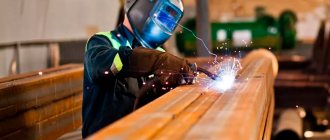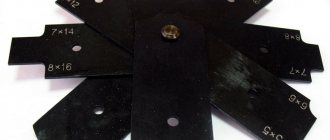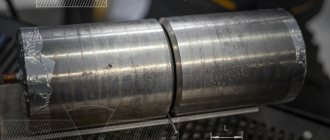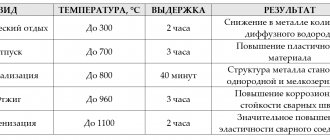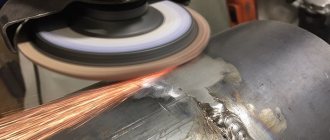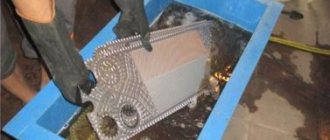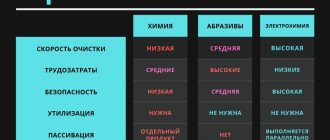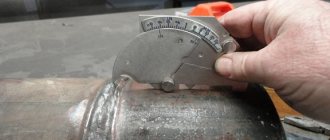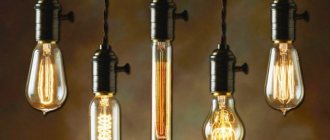Home / Welding technique
Back
Reading time: 6 min
0
8757
Defects in the weld joint lead to deterioration in its performance and visual characteristics. To detect connection defects, there are different methods for monitoring the quality of the work performed.
This could be as simple as inspecting a welded joint. Or more complex testing techniques: x-rays, equipment using ultrasonic waves.
What can be done if seam defects are detected? Is the part recycled? No. If the inspection reveals defects in the welding joints, they can be corrected.
This article will discuss in detail the options for welding defects and how they are corrected.
- Types of welding errors
- External defects Lack of penetration
- Undercuts
- Surges
- Burns
- Craters
- Hot or cold cracks
What are weld defects?
The concept includes non-compliance of a welded joint with the requirements specified in the regulatory and technical documentation - size, shape, strength, tightness, ductility and other indicators.
Definitions, designations and classification of joint defects during fusion welding of metals are given in GOST 30242-97. Defects can cause the weld to fail. If they are not corrected, the problem can lead to the collapse of the entire structure.
External flaws
Lack of penetration
Such external defects appear when the welding equipment is set to a low current level. When this indicator is underestimated, the effect of current is not enough to completely weld the joint.
Also, lack of penetration can occur at an increased speed of welding parts. In this case, the metal simply does not have time to boil thoroughly. Another reason may be inept cutting of the edges of the future joint.
To prevent this welding defect, a correctly set amperage and optimal welding arc length are sufficient.
Undercuts
This flaw is typical for T-seams and overlapping work. It is rare in butt welding. It appears when the arc voltage is incorrectly set and the welding speed is abnormal.
Preventing undercuts is quite easy. When welding, the welding arc voltage decreases and the work speed is normalized. For an accurate result, it is worth cooking with a short arc length.
It forms a fairly thin sheet, thanks to which the welding heat input is normalized. This protects against undercuts.
Surges
If beads form during welding, then the RDS is incorrectly configured. To prevent this defect from occurring, you need to clean the welding edges and reconfigure the device.
Normalize current and voltage indicators. Check the bar feed speed if the work is performed with semi-automatic equipment.
Burns
A burn-through is the appearance of through holes in the suture fabric. They are often found in the works of beginners. Their reason is the low welding speed, due to which some hot spots are burned through.
The second reason may be excessive current strength. Seams with such flaws are weak and not airtight, which will be a key point in welding pipes or tanks.
To protect against burn-through, the current value is reduced and the welding speed is increased. The correct cutting of the edges is also important. Practical training and experience will help a novice welder with this.
Welding aluminum requires the most accurate adherence to these indicators.
Craters
Craters are depressions in the weld surface that appear as a result of a sudden break in the arc. Despite their small size, they can greatly affect the reliability of the connection.
Their occurrence can be prevented by using special operating modes. They represent a function of reducing the current strength at the moment of separation, which protects against crater formation.
Older models of equipment do not have this function, so the smoothness of the lift-off is adjusted manually.
What is called a burn-through?
The defect occurs due to the leakage of weld pool metal through a hole in the seam formed as a result of through penetration. Sagging appears on the reverse side.
Reasons leading to burns:
- insufficient welding speed;
- increased power of the welding flame;
- loose connection of the lining to the main metal and its insufficient thickness;
- excessive welding current;
- increased gap between edges;
- power supply stop;
- welder's carelessness.
Exam tickets to test the knowledge of welding specialists level 1
TICKET 3
QUESTION 1. For welding what steels are electrodes of type E38, E42, E46, E50 intended.
2. Carbon structural and low alloy.
QUESTION 2. What do the letters and numbers mean in the marking of low-alloy steels and alloys?
1. Manufacturer's marks.
2. Designation of heat number and batch of metal.
3. Designation of chemical elements and their content in steel.
QUESTION 3. Indicate the reasons for the formation of the crater?
1. A crater is formed where gases are released during the welding process.
2. Due to a sharp withdrawal of the arc from the weld pool.
3. Due to significant shrinkage of the metal during crystallization.
QUESTION 4. Does the arc voltage depend on its length in manual arc welding?
3. Depends on low and high values of welding current
QUESTION 5. Who should connect and disconnect the welding power source to the power network?
1. Electrical technical personnel of this enterprise.
2. Welder working on this installation.
3. A welder working on this installation under the supervision of a foreman.
QUESTION 6. What should be the type and polarity of the current when hot-passing carbon steel joints with cellulose-coated electrodes?
1. Alternating current.
2. Direct current of reverse polarity.
3. Direct current of straight polarity.
QUESTION 7. What surfaces must be cleaned when preparing for the assembly of steam and water pipeline parts?
1. The ends of the pipes must be cleaned of dirt and rust to a metallic shine.
2. The edges and outer surfaces of the parts must be cleaned of dirt and rust to a metallic shine.
3. The edges, as well as the adjacent internal and external surfaces of the parts, must be cleaned of dirt and rust to a metallic shine.
QUESTION 8. For welding what class of steels are electrodes of types E-09M and E-09MX used?
1. For welding heat-resistant low-alloy steels.
2. For welding structural steels of increased and high strength.
3. For welding high-alloy steels.
QUESTION 9. For what purpose is the electrode rod coated?
1. To stabilize the arc, alloy the weld metal and protect the weld pool from the ingress of gases from the air and the formation of a seam.
2. To protect the rod from moisture.
3. To reduce the likelihood of the formation of both cold and hot cracks in the weld metal.
QUESTION 10. How does the length of the arc affect the stability of its combustion?
1. As the arc length increases, combustion stability decreases.
2. With increasing arc length, combustion stability increases.
3. Has no practical impact.
QUESTION 11. Select the most complete recommendations for protecting the welding site during installation?
1. It is necessary to protect the welding site from wind.
2. It is necessary to provide protection in the form of a canopy from the effects of precipitation.
3. It is necessary to protect from wind, drafts and precipitation.
QUESTION 12. What thickness of sheets can be welded using manual arc welding without cutting edges?
QUESTION 13. How does an increase in current during manual arc welding affect the geometric dimensions of the weld?
1. The penetration depth decreases and the height of the weld reinforcement increases.
2. The depth of penetration and the height of the weld reinforcement increase.
3. The height of the weld reinforcement decreases and the penetration depth increases.
QUESTION 14. How is an ammeter connected to an electrical circuit?
1. In series with an electrical circuit with a voltmeter.
2. Consistently into a common electrical circuit.
3. In parallel to a common electrical circuit.
QUESTION 15. Why does a welder need special clothing?
1. To protect the welder from thermal, light, mechanical and other influences during welding.
2. To protect it from released harmful aerosols and arc glow.
3. To protect it from electric shock.
QUESTION 16. Which of the following most strongly affects the weldability of a metal?
1. Chemical composition of the metal.
2. Mechanical properties of metal.
3. Electrical conductivity of the metal.
QUESTION 17. How does the volume of metal deposited in one pass affect the magnitude of deformations?
1. Increases residual deformations of welded structures.
2. Reduces residual deformations of welded structures.
3. Does not affect residual deformations of welded structures.
QUESTION 18. At what point should defects in welded joints subject to subsequent heat treatment be corrected?
1. Before heat treatment
2. In agreement with the parent materials science organization.
3. After heat treatment.
QUESTION 19. Citizens of what age can be allowed to perform welding work?
QUESTION 20. What line conventionally represents a visible weld in the drawing?
1. Solid main.
3. Stroke – dotted.
To move to the next page, use the page navigation below.
What is a defect called a “weld crater”
One of the sources of crack formation is a crater - a depression (shrinkage cavity) that appears at the end of the weld bead due to a break in the welding flame or welding arc.
A weld joint defect called weld crater often occurs when producing short welds. The dimensions of the recess depend on the strength of the welding current. If the crater is not eliminated, the discontinuity, as a stress riser, will negatively affect the strength of the connection. And shrinkage looseness that occurs in the shrinkage cavity contributes to the formation of cracks.
Welding defective areas
The technology recommended for correcting defects in welded joints using argon arc welding is as follows:
- select the appropriate welding mode;
- excite the welding arc on the technological plate and, after heating, transfer the electrode to the welding site;
- during the welding process and when exciting the welding arc, do not allow the end of the tungsten rod to come into contact with the weld pool or filler wire;
- feed the filler wire only after the groove edges have melted and a weld pool has formed;
- Weld defects in the lower position and at an angle of no more than 30°;
- for multi-layer welding, after applying each layer, clean the deposited weld metal with a steel brush;
- the projection of the tungsten electrode in relation to the lower edge of the gas nozzle should be 3 ... 8 mm;
- the burner should be held at an angle of 60 ... 80° to the surface of the part at the place where the defect is welded;
- keep the filler wire at an angle to the axis of the torch electrode and insert it into the weld pool with uniform reciprocating movements, often and in small portions;
- welding of defects in all cases should be completed with the formation of a reinforced seam with a height of 3 ... 5 mm;
- periodically clean the torch tip and tungsten electrode from metal splashes;
- in case of accidental arc breaks, re-ignite it at the seam at a distance of 30 mm from the break point;
- maintain the arc length within 2.5 ... 3.0 mm, break the arc by gradually increasing it;
- The welding process begins with preliminary local heating of the defective area until the edges melt.
If the thickness of the part material is more than 15 mm, the defective area should be welded using a multi-layer seam. In this case, the height of the deposited metal above the surface of the part must be at least 3 mm.
For critical structures, two welds of the same defective area are allowed, since with a larger number of welds a significant decrease in the mechanical properties of the metal in these zones is observed.
355
Group 6
All other defects that are not included in the previous groups are positioned as defects 600. These include random arcing, spattering, scuffing and reduction in metal thickness. Despite the wide variety of welding seam defects, very specific recommendations have been developed to prevent them.
It will be difficult for a novice welder to comply with all the requirements, but professional welders can easily avoid poor-quality results. It is necessary to initially develop a welding technique. To do this, it is necessary to resolve such issues as the choice of equipment, the choice of consumables, proper surface treatment, and welding techniques.
